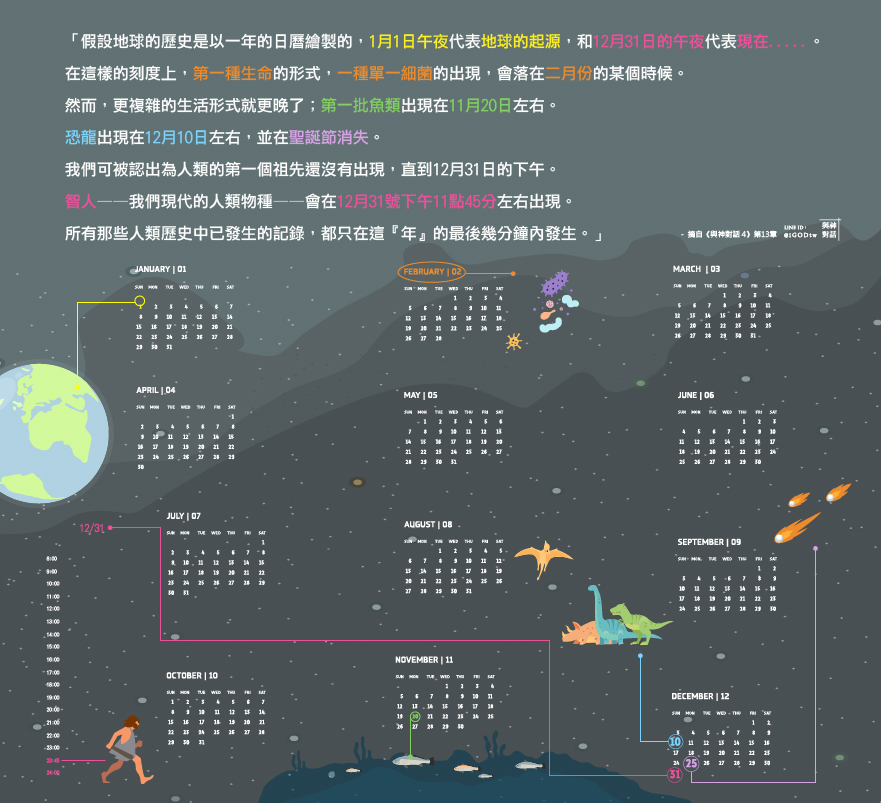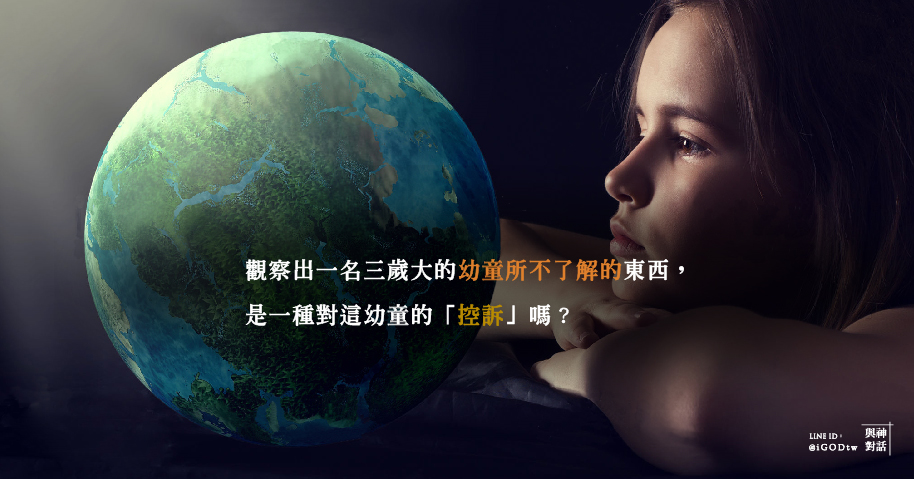
不少人認為人類在地球上是高度進化的物種。然而,了解一下哪些是宇宙中已覺醒的物種和人類之間的主要差異,或許會帶給我們一些不同的思維和啟發。
而此篇所提供的「地球史的年曆比喻圖」是一個簡單易懂的圖解,它能讓人從這比喻中理解為什麼在人類的社會中,大多數人會否認許多他們看到的東西,甚至否認自己內心的感受。
為何【人類在宇宙中還是個「非常年幼的物種」?】
尼爾:……我的某一部分總覺得,這「16項人類和已覺醒物種間的主要差異」是一種對我們整個物種的控訴(indictment),對於我們的整個生活方式的控訴。
觀察出一名三歲大的幼童所不了解的東西,是一種對她的「控訴」嗎?
慶祝你知道「你所知道的」(Celebrate that you know what you know! 意思是:慶祝你開始「憶起」一些你已經知道的事情。)!慶祝你清楚地看到「你的行為和那些你可以決定為更有益的行為」之間的區別吧!
慶祝「你(終於)明白這些(真相)」的成長,正如你慶祝每個孩子早期的成長起步。
尼爾:謝謝你提醒我。你不斷提出這些很棒的論點。我們真的是一個非常年幼的物種。也許我們應該以明確的方式把這些論點講透徹,讓它們可以在人們心中變得真實。
很多人喜歡認為人類是高度進化的。事實上,人類在這個星球上才剛剛跨出它的嬰兒期。在羅伯特·奧恩斯坦(Robert Ornstein)和保羅·埃利希(Paul Ehrlich)的《新世界新思想(New World New Mind)》書中,他們把這個觀點放在一個相當令人驚奇的段落中:
「假設地球的歷史是以一年的日曆繪製的,1月1日午夜代表地球的起源,和12月31日的午夜代表現在。然後,地球『年』的每一天將代表1200萬年的實際歷史。在這樣的刻度上,第一種生命的形式,一種單一細菌的出現,會落在二月份的某個時候。然而,更複雜的生活形式就更晚了;第一批魚類出現在11月20日左右。恐龍出現在12月10日左右,並在聖誕節消失。我們可被認出為人類的第一個祖先還沒有出現,直到12月31日的下午。智人(Homo sapiens)——我們現代的人類物種——會在12月31日下午11點45分左右出現。所有那些人類歷史中已發生的記錄,都只在這『年』的最後幾分鐘內發生。」

這比喻把所有事件都放入簡單又出色的觀點下。它創造了一個情境背景,現在更能讓人理解為什麼在人類的社會中,大多數人會否認許多他們看到的東西。他們甚至會否認自己的個人感覺,而且最終,否定他們自己的真理。
摘自《與神對話 4》第 13章



Neale: There are more differences, of course, but those are some of the chief characteristics of an awakened species, and the major differences between such a species and humanity in its present unawakened state. Gosh, part of me feels that this list is an indictment of our whole species, our whole away of life.
Is it an “indictment” of a three-year-old to observe that adults understand things she does not?
Celebrate that you know what you know! Celebrate that you clearly see the difference between your behaviors and behaviors that you may decide are more beneficial.
Celebrate the growth of knowing this, even as you celebrate the early steps of every child.
Neale: Thanks for reminding me. You keep making this point. We really are a very young species. Perhaps we should drive that point home in specific terms, so it can become real in people’s minds.
A lot of folks like to think of humans as highly evolved. In fact, humanity has just emerged from its infancy on this planet. In their book, New World New Mind, Robert Ornstein and Paul Ehrlich placed this in perspective in one mind-boggling paragraph:
“Suppose Earth’s history were charted on a single year’s calendar, with midnight January 1 representing the origin of the Earth and midnight December 31 the present. Then each day of Earth’s “year” would represent 12 million years of actual history. On that scale, the first form of life, a simple bacterium, would arise sometime in February. More complex life-forms, however, come much later; the first fishes appear around November 20. The dinosaurs arrive around December 10 and disappear on Christmas Day. The first of our ancestors recognizable as human would not show up until the afternoon of December 31. Homo sapiens – our species – would emerge at around 11:45 pm. All that has happened in recorded history would occur in the final minute of the year.”
That puts things into perspective beautifully. And it creates a context within which it can now be understood why, in human societies, most people deny much of what they see. They even deny their personal feelings, and, eventually, their own truth.

